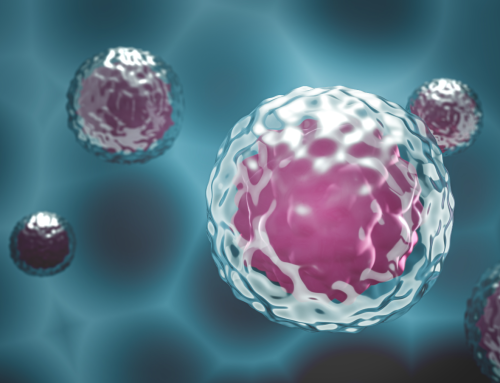
Digitalis lanata, a species of the foxglove plant, highly toxic, is the plant from which the inotrope digoxin is extracted. Digoxin’s margin of safety is small. Coenzyme Q10, which boosts energy production in the heart muscle cells, is quite safe and well tolerated.
What is it that we need to improve the generally poor prognosis given to chronic heart failure patients? Heart failure is, at its most basic, the inability of the heart to pump out sufficient blood so that the body gets the oxygen and the nutrients that it needs. Heart failure is the condition in which fluid builds up in the lungs and in the lower extremities because of the inadequate pumping action of the heart. Heart failure is feeling tired and out of breath at the slightest exertion.
What are the levels of heart failure?
The New York Heart Association NYHA) has devised a system for the functional classification of heart failure:
- Class I: able to do ordinary physical activity; higher levels of exertion cause fatigue and shortness of breath
- Class II: at ease when at rest but fatigued and short of breath at ordinary levels of physical activity
- Class III: low levels of activity cause fatigue, heart palpitation, and shortness of breath
- Class IV: tired and short of breath even at rest; light physical activity increases the discomfort
What are the expectancy rates for heart failure?
It seems that, based on the results of epidemiological studies and clinical trials, researchers can use the NYHA functional classifications to predict the one-year and three-year mortality expectancy in heart failure patients [1].
Classes I/II:
82% life expectancy after one year
52% life expectancy after three years
Class III:
77% life expectancy after one year
34% life expectancy after three years
Class IV:
41% life expectancy after one year
0% life expectancy after three years
Remember: the above life expectancy percentages are group percentages, not individual percentages.
Class IV heart failure patients are, essentially, in the end stage of the disease.
Encouraging results from studies with Coenzyme Q10
That is why it is so encouraging to see the results of the clinical trials like the Morisco study and the Q-Symbio study of the adjunctive treatment of heart failure with Coenzyme Q10. The results show the patients’ improving their NYHA functional class diagnosis.
How can we improve NYHA functional class?
This brings us back to the original question: what can we do to improve the prognosis of heart failure patients?
Don’t we need to do something to improve the pumping action of the heart?
Don’t we need to do something to increase the force of the contractions of the heart?
- The force of the contractions of the right ventricle, the chamber that pumps the blood into the pulmonary artery and to the lungs where the blood takes on oxygen?
- The force of the left ventricular chamber, the chamber that pumps the blood out to the body?
Inotrope drugs
The drugs that increase the force of the contractions of a muscle such as the heart muscle are called inotropes. The only guidelines-approved inotrope for use in heart failure patients is the digoxin drug, a purified derivative from the foxglove plant (known as Digitalis lanata) [3]. Digoxin has the following pharmaceutical brand names:
- Cardoxin
- Digitek
- Lanoxin
- Lanoxicaps
Digoxin not a first choice drug
The thing about digoxin is that, given its limited margin of safety, it is probably not the first choice of the cardiologist for the treatment of heart failure. The cardiologist is more likely to try other medications first:
- Angiotensin Converting Enzyme (ACE) Inhibitors, which should help lower blood pressure
- Aldosterone antagonists, which should help remove excess fluid from the body
- Beta blockers, which should reduce heart rate and lower blood pressure
- Diuretics, which should reduce the build-up of fluid in the lungs and in the feet and ankles
What about Coenzyme Q10 as an indirect positive inotrope?
Coenzyme Q10 is involved as an electron and proton carrier in the cellular production of ATP. Randomized controlled clinical trials have shown that adjuvant treatment of heart failure patients with Coenzyme Q10 leads to improved heart muscle performance and to improvements in the symptoms and quality of life and survival of the patients.
What’s not to like about Coenzyme Q10 for heart failure patients?
Coenzyme Q10 has many things going for it as an additive treatment for heart failure [2]:
- It is safe and well-tolerated
- It does not interfere with the effects of Coumadin (warfarin)
- It does not interfere with the glycemic control of type-1 or type-2 diabetics
- It does not interfere with anti-hypertensive medications
- It can reduce hospitalizations and cardiovascular deaths
- It helps to replace the Coenzyme Q10 that statin medications stop the body from producing
- It is affordable
Note, please: Anyone taking anti-coagulant medications or anti-hypertensive medications and anyone who is a diabetic should check with his or her physician before starting to take Coenzyme Q10. There should be no problem, but it is best to check first.
Note, too: It is very important to choose a Coenzyme Q10 preparation with a documented good absorption or, better yet, with a documented beneficial health effect.
Sources:
- Heart failure expectancy. (2016). Nobel Heart Centre. Retrieved from http://www.singaporecardiologists.com/?p=373.
- Mortensen, S. A., & Mortensen, A. L. (2014). The mitochondria in heart failure: a target for coenzyme Q10 therapy?. Clinical Pharmacology And Therapeutics, 96(6), 645-647.
- Yancy, C. W., Jessup, M., Bozkurt, B., Butler, J., Casey, D. J., Drazner, M. H., & … Wilkoff, B. L. (2013). 2013 ACCF/AHA guideline for the management of heart failure: a report of the American College of Cardiology Foundation/American Heart Association Task Force on Practice Guidelines. Journal of The American College Of Cardiology, 62(16), e147-e239.








Leave A Comment